When it comes to Maharashtrian cuisine Modak are rice flour dumplings stuffed with a traditional sweet filling. Also, a favorite of Bhagwan Ganesha. Hence, a Modak Recipe is a popular one from the list of Ganesh Chaturthi Recipes. This Dry Fruit Modak is a variation to the classic steamed modak with a stuffing mixture made of assorted dry fruits, Khoya (evaporated milk solids), poppy seeds and coconut.
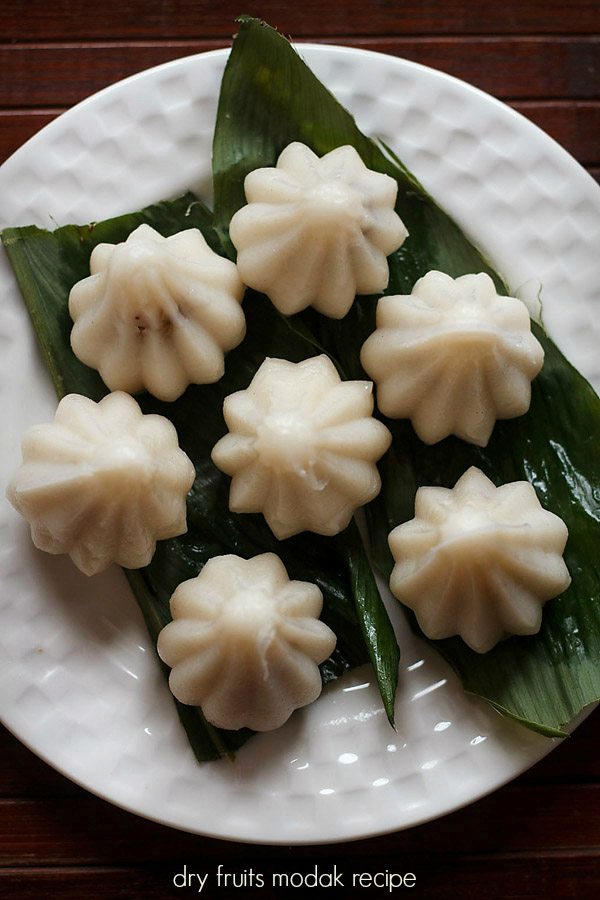
About Dry Fruit Modak
This Dry Fruit Modak recipe is again my mother’s special recipe. During Ganesh Chaturthi, she makes this and a few more varieties including the traditional modak. I would say that as much as I like the original steamed modak, this one made with a mix of dry fruits is also a delicious one.
Dry Fruit Modak recipe is similar to that of ukadiche modak. Only the stuffing is different, which consists of dry fruits, sugar and khoya or mawa. But after shaping, the modak are steamed in a steamer pan just like the traditional version.
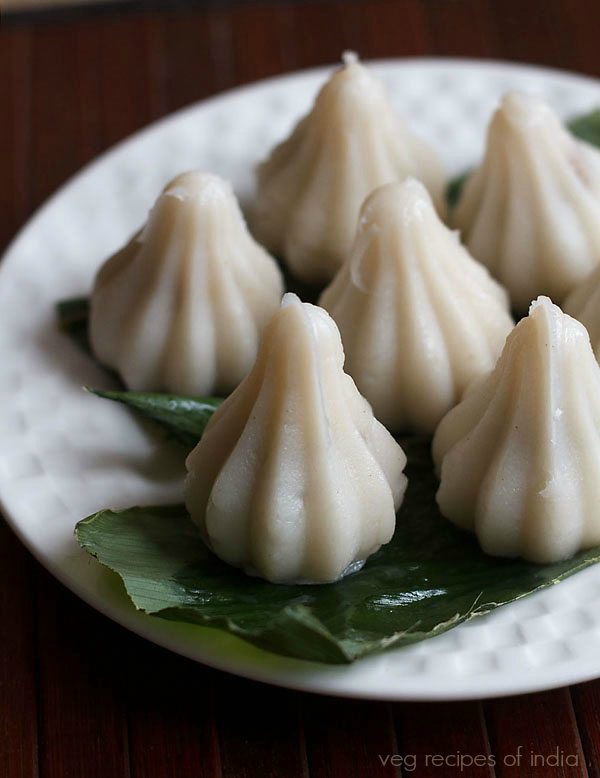
The nuts and dry fruits that I have used for the filling are cashews, almonds, pistachios, dates and golden raisins. Along with these, the addition of chironji (charoli), poppy seeds (khus khus) and fresh grated coconut makes it simply sumptuous. You’ll actually end up eating small balls of this mixture while making the Dry Fruit Modak!
I have steamed these modak on turmeric leaves which impart an extra unique flavor and aroma. The speciality of these leaves is that they belong to my home terrace garden. So, completely fresh and organic. Try growing your own plants at home and using them in cooking, you’ll know the difference.
How to make Dry Fruit Modak
Prepare Dough
1. Keep all the ingredients ready for making modak. Then, chop all the dry fruits, nuts and set aside.
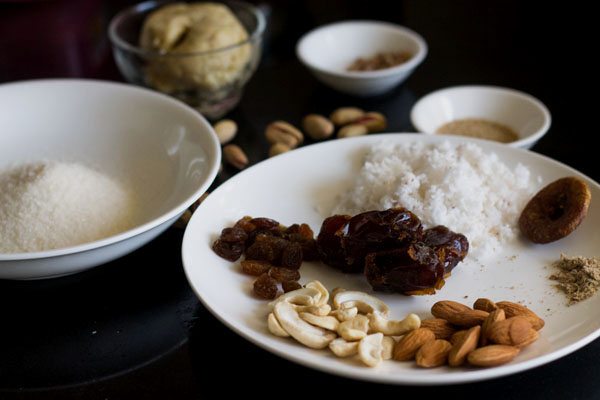
2. In a pan or vessel, pour 1.5 cups water. Place the pan on a stovetop on medium to high heat.

3. Add ¼ teaspoon salt.

4. Allow the water to come to a rolling boil.

5. Reduce the heat and add the rice flour gradually. This is 1 cup rice flour.
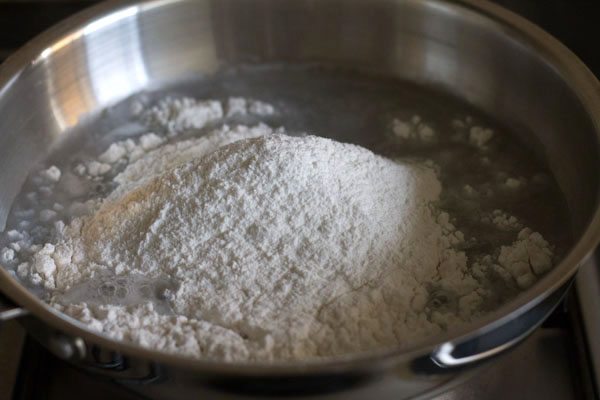
6. Quickly stir and mix the flour with water.
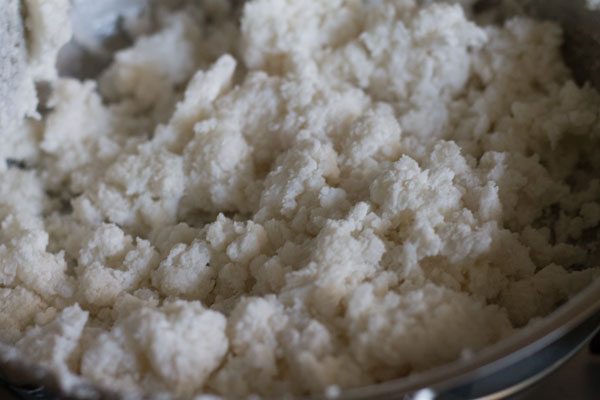
7. Mix well and switch off the heat.
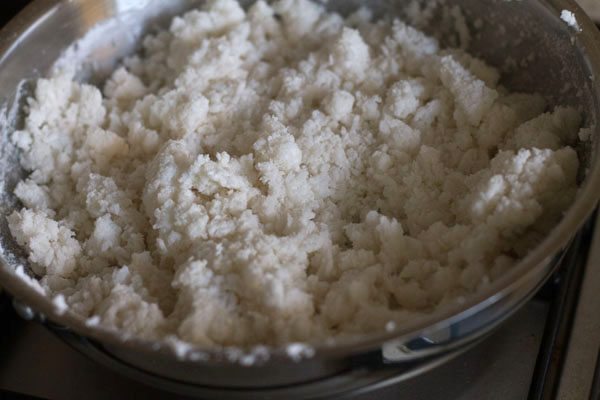
8. Cover the mixture with a lid for 4 to 5 minutes.
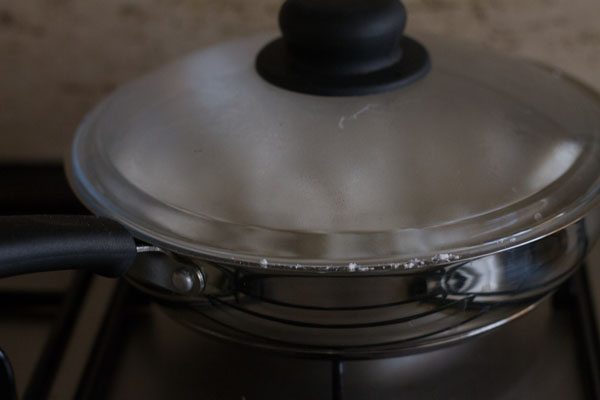
9. Then, transfer the mixture to a thali or plate.

10. Allow the mixture to slightly cool down. Knead the dough while its still warm but take care not to burn your fingers.

11. The dough should be soft and smooth.

12. Cover the dough with a damp linen cloth or bottom napkin and allow it to rest for 10 to 12 minutes.
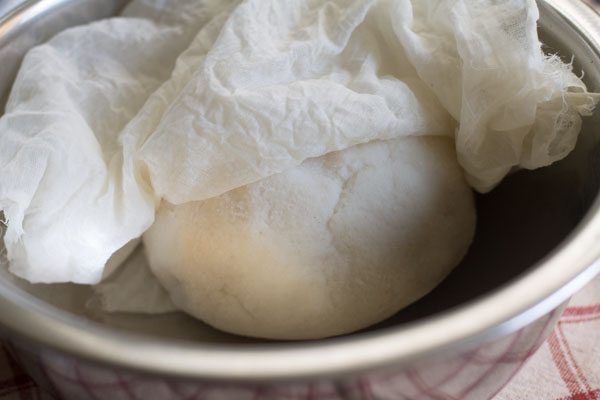
Prepare Dry Fruit Stuffing
13. Meanwhile, start preparing the filling or stuffing for the modak. Heat a pan and add 1 tablespoon ghee. You can also use any neutral flavored oil instead of ghee.
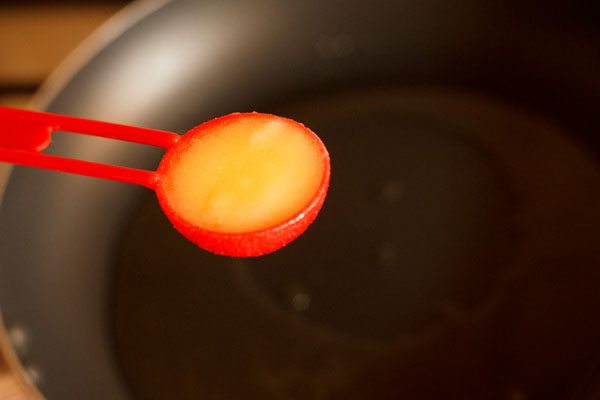
14. Then, add all the following listed dry fruits and nuts:
- ¼ cup finely chopped almonds
- 1.5 tablespoons finely chopped pistachios
- 2 tablespoons finely chopped cashews
- 4 to 5 finely chopped seedless dates
- 1 tablespoon chironji
- 1 tablespoon raisins
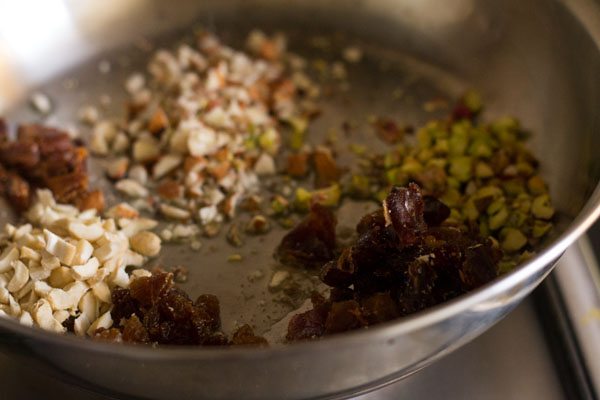
15. Begin stirring on low heat.

16. After 1 to 2 minutes, the mixture will be slightly roasted and turn fragrant. Remove from the pan and set aside on a plate.
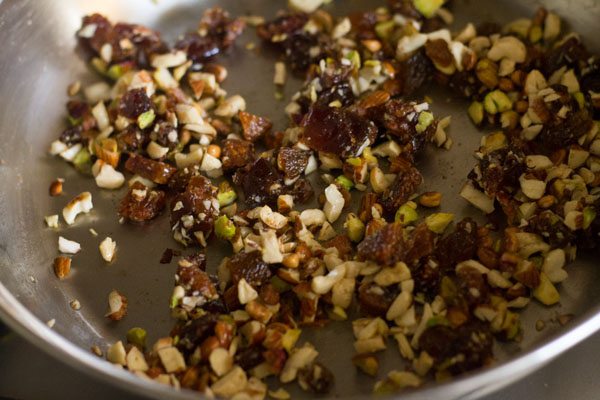
17. In the same pan, sauté 1 teaspoon poppy seeds (khus khus) in 1 teaspoon ghee for a minute on low heat.
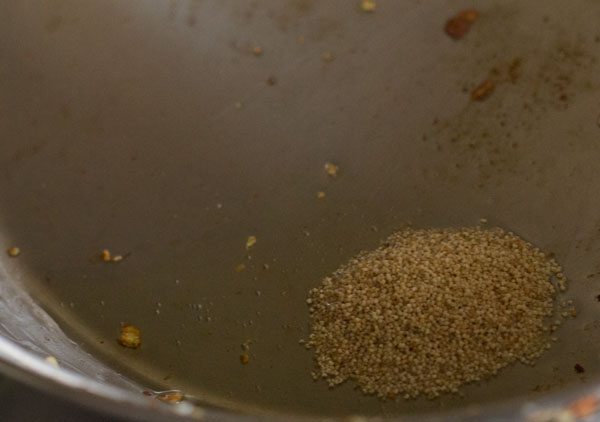
18. When the poppy seeds crackle, remove and add it to the bowl with the roasted dry fruit mixture.

19. Next, heat a pan and keep the heat to a low. Add 100 grams grated or chopped khoya (mawa) in it.
I have used a non-stick pan for cooking the khoya as it might burn or stick in any metal vessel.
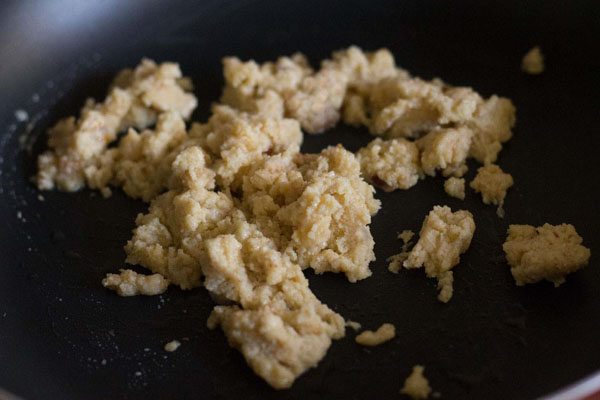
20. Keep stirring on low heat for a minute. The khoya will begin to melt.
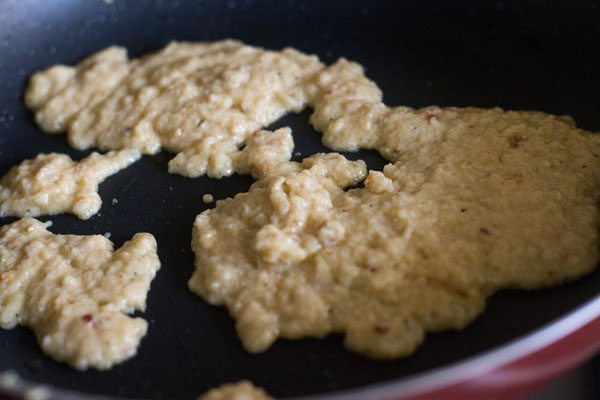
21. Now, add ¼ cup sugar.
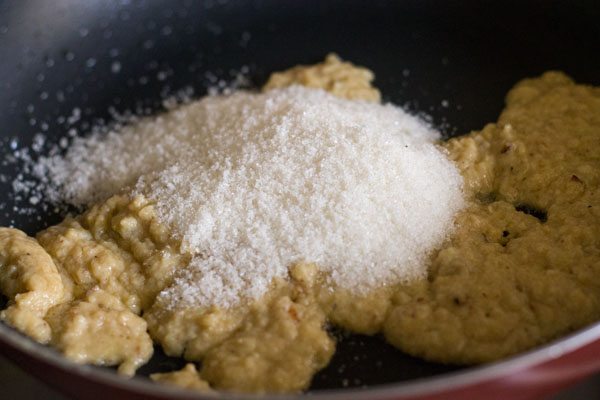
22. Mix very well.
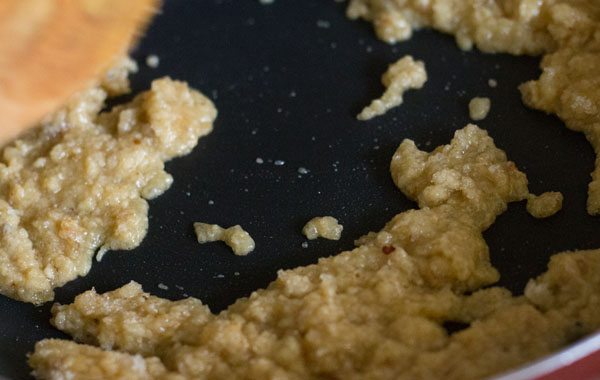
23. Keep stirring the mixture. The sugar will melt and the mixture will get a thin consistency.
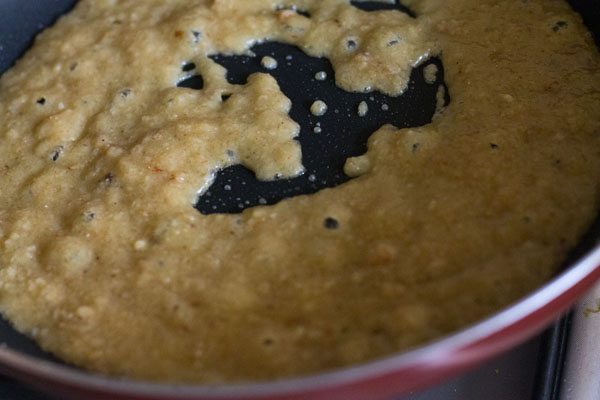
24. The mixture will start bubbling.
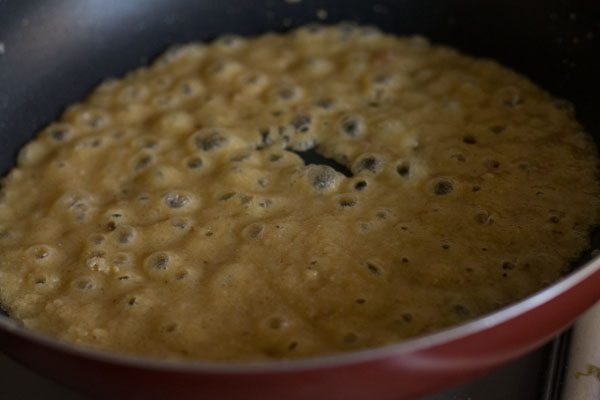
25. Then, add ¼ cup fresh grated coconut.

26. Stir again on low heat for a minute.

27. Add the roasted dry fruit-poppy seeds mixture.

28. Keep stirring and mixing for a minute more on low heat.
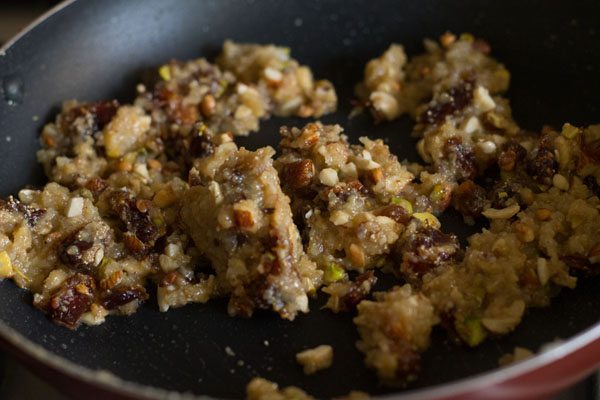
29. Switch off the heat.

30. Transfer the cooked dry fruit filling mixture to another dish and let it become warm or cool down completely.
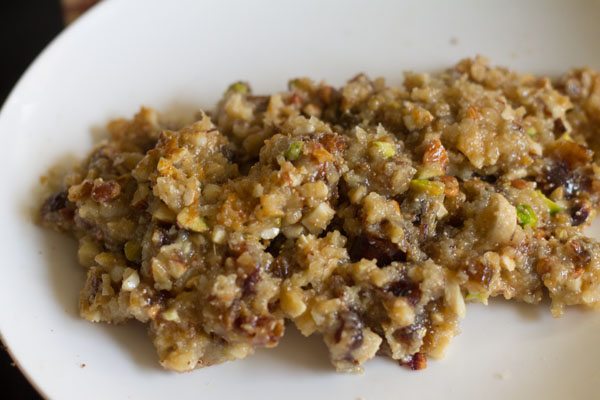
31. If you are using turmeric leaves, then cut them and place them on individual idli moulds. Otherwise just grease the idli moulds or steaming plates with some oil or ghee.
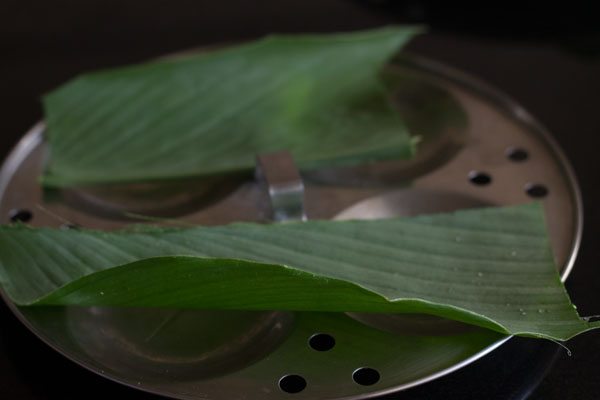
Prepare Dry Fruit Modak
32. Make small balls from the dough. They should be smooth and have no cracks. Some may get cracks, so just rub some water on your palm and shape them again into balls to get rid of the cracks.

33. Take the modak mould. Grease it with a little ghee or oil. Close or lock the mould. Put a small dough ball in the mould.

34. Press the rice dough on the walls of the mould creating a cavity or space in the center.
If you do not have the moulds, then you can flatten the balls. Place the dry fruit filling mixture in the center. Make small pleats, bring all the edges together and join.
Refer for the method in my Ukadiche Modak Recipe.
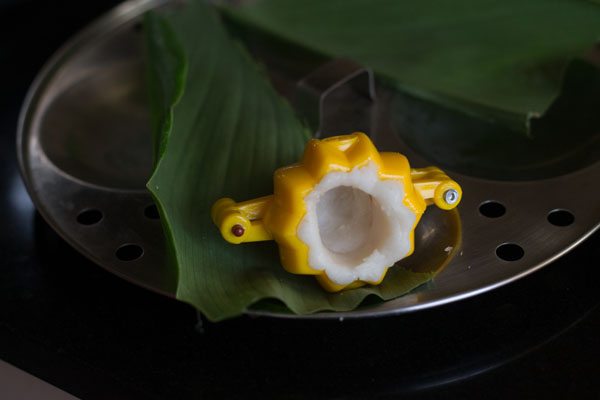
35. Add the dry fruit mixture in the cavity.
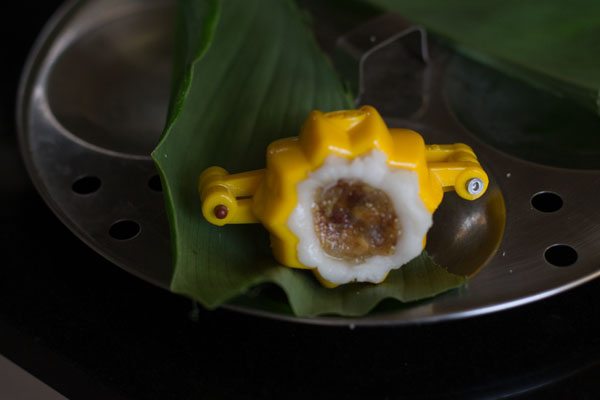
35. Place a small piece of the dough covering the base, gently smoothen and even it.

35. Open or unlock the mould gently.
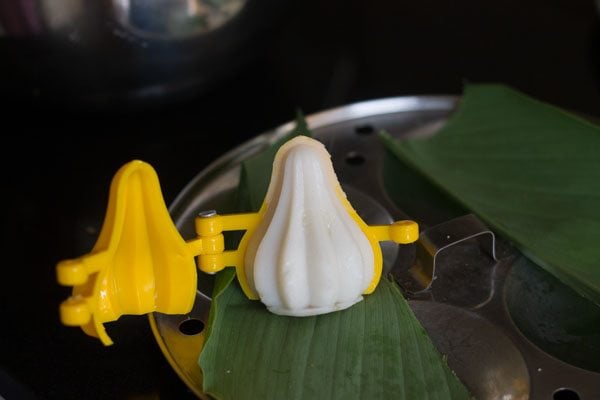
37. Gently remove the modak.

38. Keep the modak on the turmeric leaves placed on an idli tray or greased idli moulds. You can also place the modak on a greased round baking pan.
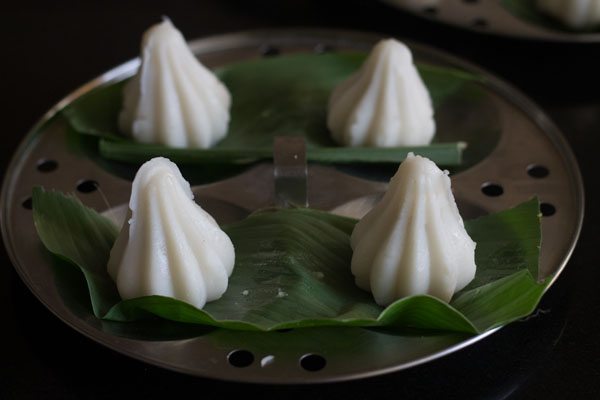
Steam Dry Fruit Modak
39. Either you can use a steamer pan or you can steam the modak in a pressure cooker for 8 to 10 minutes on low heat without the whistle/vent weight.
If using a steamer pan, add 2½ cups water to the pan. Let the water come to a boil.
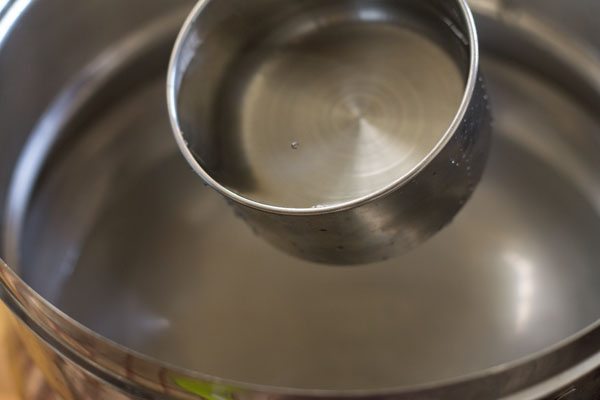
40. Then, place the idli tray with the modaks in the steamer. Cover the pan with a lid and steam for 10 to 15 minutes on a low heat.

41. Below is a picture of the steamed modak.

42. Once the modak are steamed, remove them from the pan and keep aside.

43. Dry Fruit Modak is ready to be offered to Bhagwan Ganesha. You can also drizzle some ghee on the modak, before offering to Bhagwan Ganesha.
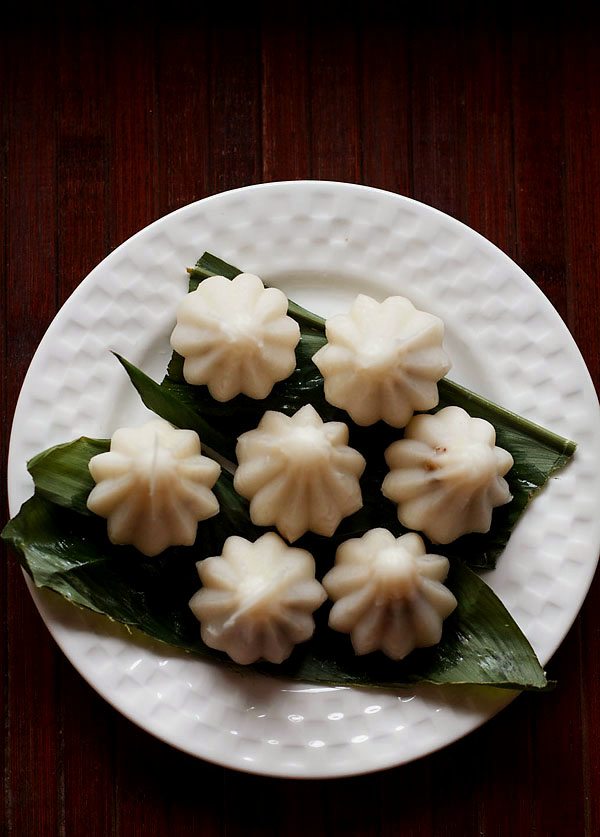
Expert Tips
- Make sure to use premium quality fresh khoya or mawa, and not a stale or rancid one.
- You can fine-tune the quantity of sugar as per the sweetness level you want to have in the modak. If you feel that it is enough with the addition of sweet dates, you can lessen the quantity of sugar.
- Ghee or any neutral oil, any of these can be used for this Modak recipe.
- Shape the modak using your hands or moulds, whatever you are comfortable with.
- Steam the modak in a steamer pan or pressure cooker or Instant Pot, whatever you have. If you are using a pressure cooker, steam for 8 to 10 minutes on low heat without the vent weight or whistle.
- Maintain hygiene, purity and a prayerful inner state while making this sweet, especially if you’re preparing them for naivedyam or bhog for Lord Ganesha.
- Consume these dry fruit modak the same day you prepare. They taste best when fresh.
More Ganesh Chaturthi Sweets To Try!
Halwa Recipe
Ladoo Recipes
Sweets Recipes
Ladoo Recipes
Please be sure to rate the recipe in the recipe card or leave a comment below if you have made it. For more vegetarian inspirations, Sign Up for my emails or follow me on Instagram, Youtube, Facebook, Pinterest or Twitter.

Dry Fruit Modak
Ingredients
For the outer covering
- 1 cup Rice Flour
- 1.5 cups of water
- ¼ teaspoon salt
For the dry fruits stuffing
- 1 to 2 tablespoon ghee or any neutral oil
- 100 gram Mawa (khoya)
- 1 teaspoon khus khus (poppy seeds) – optional
- ¼ cup almonds or about 16 medium sized almonds, chopped finely
- 2 tablespoons cashews – chopped finely
- 1.5 tablespoons pistachios – chopped finely
- 1 tablespoon chironji (charoli)
- 4 to 5 dates – seedless, chopped finely
- 1 tablespoon golden raisins
- ¼ cup fresh grated coconut
- ¼ cup sugar
Other ingredients
- 2.5 cups water for steaming modak in a steamer pan
- 1 turmeric leaf – optional
- 1 to 2 teaspoon ghee or oil for greasing the steamer pan or idli moulds if not using turmeric leaf
Instructions
Prepping dry fruits and preparing the rice dough
- Keep all the ingredients ready for the dry fruit modak. Chop all the dry fruits, nuts and keep aside.
- In a pan or vessel add 1.5 cups of water. Place it on a stovetop on medium to high flame. Sprinkle ¼ teaspoon salt.
- Let the water to come to a rolling boil.
- Reduce the heat and then add the rice flour gradually.
- Quickly stir and mix the rice flour with water.
- Mix very well and switch off the heat.
- Cover the mixture with a lid and keep aside for 4 to 5 mins.
- Then transfer the mixture to a thali or plate.
- Allow the dough to slightly cool down. Knead the dough while its still warm but take care not to burn your fingers.
- The dough should be soft and smooth.
- Cover the dough with a damp muslin or cotton cloth. Now allow the dough to rest for 10 to 12 mins.
Preparing dry fruits stuffing
- Meanwhile prepare the stuffing for the modaks. Heat a shallow frying pan and add 1 tablespoon of ghee.
- Add all the chopped almonds, pistachios, cashews, dates, chironji and raisins.
- Keep stirring on low heat.
- After 1 to 2 mins the dry fruits will be fragrant and partly roasted. Remove them on a plate and set aside.
- In the same pan add 1 teaspoon ghee. Add poppy seeds and saute them till they crackle on low heat.
- Then remove the poppy seeds and also the ghee. Place aside with the roasted dry fruits and nuts.
- Then add grated or chopped mawa.
- When the mawa begins to melt, then add ¼ cup sugar.
- Mix very well. Keep stirring the mixture.
- The mixture will start bubbling. Then add ¼ cup fresh grated coconut.
- Stir again on low heat for a minute.
- Add the roasted dry fruits and poppy seeds.
- Keep stirring and mixing for a minute more on low heat.
- Switch off the flame.
- Transfer the mixture to another plate.
- If you are using turmeric leaves then cut them. Place the leaves on individual idli moulds or line them on a baking pan or steaming pan. Or else simply grease the moulds or steamer pan with oil or ghee.
Assembling & shaping
- Grease the modal moulds with little ghee or oil.
- Make small balls from the dough. They should be smooth and have no cracks.
- Close or lock the mould gently. Put a small ball in the mould. Press the dough along the surface of the mould, so that a cavity or space is made.
- Add the dry fruit mixture. Then cover with small piece of dough on top. Press to even it.
- Now open or unlock the mould.
- Gently remove the modak from the mould. Alternatively you could flatten the ball. Then place the modak filling in the center. Make small pleats bring all the edges together and join.
- Keep the modak over the turmeric leaves or on greased idli moulds or steamer pan.
- Either you could use a steamer pan or you could steam the modaks in a pressure cooker for 8 to 10 mins on low heat without the whistle and vent. If using a steamer pan then add 2 and ½ cup of water to the pan. Let the water come to a boil.
- Now carefully place the moulds into the steamer pan taking care that the water does not touch the idli moulds or baking pan on which the modaks are kept. Cover the pan with a lid and steam for 10 to 15 minutes on a low heat.
- Once the modaks are steamed gently remove and keep aside.
- The Dry Fruit Modak are ready to be offered to Bhagwan Ganesha. You can sprinkle some ghee or saffron infused milk on the modaks prior to offering it to Bhagwan Ganesha.
Notes
- You could use a neutral flavored oil instead of ghee.
- Either you could shape modak with your hand or use moulds.
- Eat the modaks same day you make. They taste better when they are freshly made.
- Ensure that the khoya or mawa is fresh and not rancid.
Nutrition Info (Approximate Values)
This Dry Fruit Modak post from the blog archives first published in August 2016 has been republished and updated on 30th July 2022.

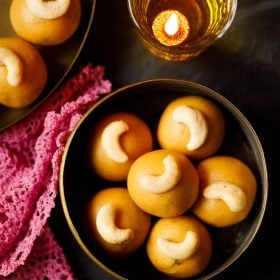


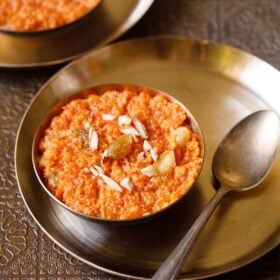
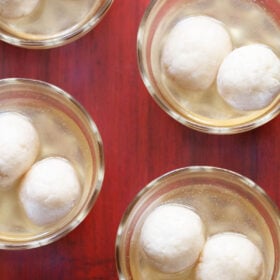
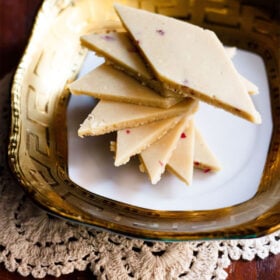








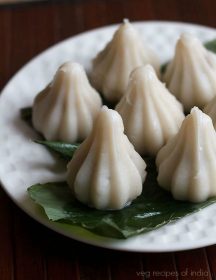
Do we have to eat it warm or cold?
You can have warm or at room temperature.
if measure 1\2 cup of rice flour then how much water do we need to add ???
for 1/2 cup of rice flour, you can add about 1/2 to 3/4 cup water. usually the addition of water depends on the quality of rice flour. so if the rice flour is very fine like a powder, then 1/2 cup is ok. if its slightly coarse, then 3/4th cup water is fine.
hello .. can we substitute mawa with milk -mawa powder? If yes what qty may we use ?
you can add milk powder. add 1/3 to 1/2 cup milk powder.
Hello,
I have tried your other recipes like chutney’s, momo’s and some south veg tawa and it turn out awesome. i am sure this is also going to be wow dish and like i am hoping my wife will love it too. just question though who took this photographs and which camera you use?
pleased to know this jagtap thank you for your kind and positive words 🙂 keep us posted about your wife’s reaction. i have clicked this photographs and used a dslr camera thanks.
Hi, Mam please tell me from where i get that mould…..
this one my sis got for me from amazon.in. just type modak mould in the search bar on amazon.in and you will get the results.